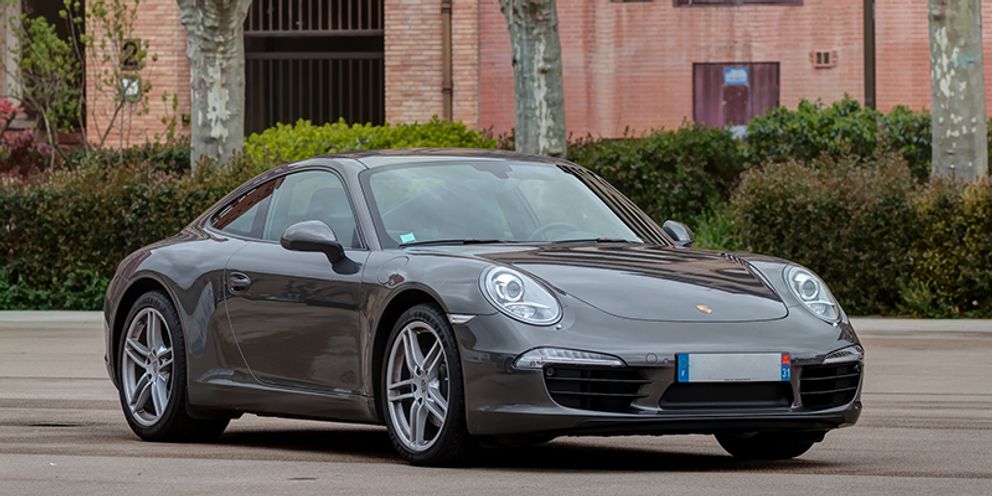
History of the Porsche
Written By John Linden
For the past five decades, the 911 has been the beating heart of the Porsche brand. It has been the inspiration for many car enthusiasts who appreciate the history of the vehicle and the longevity of the series. Ever since its introduction at the IAA International Automotive Show in 1963 as the Type 901, the 911 has been the benchmark for all other sporting vehicles. In fact, the 911 has set the standard for all other Porsche series to follow.
The Porsche 911 is the most successful sports vehicle in the world, with 820,000 models built to date. Through the generations, the series has reinvented itself dozens of times, demonstrating that Porsche is one of the most versatile and creative brands in the world. Such car owners must select high quality, durable porsche 911 cover which will give you protection that you need. The Porsche 911 can be driven by anyone in practically any environment. The 911 has been socially accepted while giving the impression of exclusivity with its unique classic lines and advanced technology. The 911 was a vehicle virtually born on the racetrack. From its inception, it has found its way onto multiple worldwide racing circuits. Not surprisingly, two-thirds of the 30,000 races that Porsche has participated in have ended in victory.
Evolution over the decades
1963 – 1972
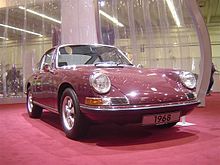
The 911 was given birth as the successor to the Porsche 356. From the beginning, the 911 entered a market full of passionate car enthusiasts looking to drive the newest sports car out there. The new ‘prototype’ vehicle was first revealed at the Frankfurt IAA Motor Show in 1963. Initially, it was named the 901 but later renamed to the 911 after its release to the markets in 1964. For the speed enthusiasts, the 911 came with an air-cooled six-cylinder boxer engineer. On an open road, it was able to hit speeds as high as 131 mph.
In 1965, Porsche slowed things down with the release of the four-cylinder Porsche 912. The following year, in 1966 the 911S was released to the public. It was the first of its kind to display forged alloy wheels. If that wasn’t enough, the 911 Targa was released during the same year. The Targa was known for its distinct stainless steel roll bar, and it was the first vehicle to have a safety cabriolet. In 1967, the four-speed transmission semi-automatic Sportomatic was manufactured for public use. Even with so many releases in such a short amount of time, Porsche was just getting started. The 911 T was released in the same year (1967) followed by an E and S variant. With the 1967 releases, the Porsche brand was the very first German car manufacturer to act in agreement with the stringent US exhaust emission control guidelines. As the years rolled on, the Porsche 911 gained more raw power with the increase of engine displacement, an upsurge in the bore and stroke of the engine’s cylinders with an increase to 2.2 liters in 1969 and then a jump to 2.4 in 1971.
The release of the 911 Carrera RS was a dream to not only the loyal fan base of the Porsche brand, but also to all sports car enthusiasts. It weighed less than 1000 kg, and it was the first production vehicle ever to have a spoiler.
1973 Porsche 911 Carrera RS
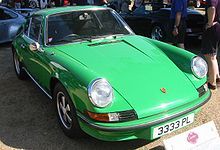
Ten years after its launch, the 911 underwent a dramatic change with the introduction of the G series from 1973 to 1989. There were many improvements with the G series, the most prominent being improvements made to the safety of the vehicle. One of the most noticeable safety features added were bellows bumpers, a new feature at the time that was designed to meet the most recent crash test criteria in the United States. The safety standards were increased even further by the addition of three-point seat belts and integrated headrests.
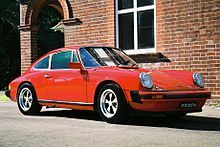
In 1974 the Porsche 911 Turbo was unveiled to the world. It came with a massive rear spoiler and was known for its balance of luxury and performance. Three years later, the newest 911 came roaring onto the stage, the intercooler-equipped 911 Turbo 3.3. The Turbo 3.3 was considered the best in its class. However, 1983 brought along the 911 Carrera with a 3.2 liter 231 hpengine. It easily became popular with car collectors. In 1982, 911 owners could throw back their rooftops with the addition of a cabriolet. 1989 brought along the Carrera Speedster which invoked images of the renowned 356 in the fifties.
1993 Porsche 911 Carrera
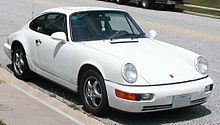
Just when the experts thought things would settle down, the 1988 launch of the 911 Carrera 4 (964) baffled everyone. At this stage in its evolution, the 911 platform had been in production for 15 years. With the advent of new technology and brilliant innovation, 85% of the 464 was made up of new components. This gave Porsche a more modern vehicle that fit with the times. It had an air-cooled 3.6-liter boxer engine. When it came to external aesthetics, the 964 sported a polyurethane bumper and rear spoiler that extended automatically.
For the most part, the aesthetics of the 964 only differed slightly from its predecessors. What truly set it apart were the internal components. Not only did Porsche increase the performance of the 964, but it also enhanced the comfort. Added features included Tiptronic (a type of automatic transmission that allows users to shift gears in the same way they would with a manual transmission), ABS (Anti-lock braking system), airbags, and power steering. The 964 also had a completely redesigned chassis that utilized light alloy control arms and coil springs (as opposed to a torsion-bar suspension). A new innovative member of the 911 series was the Carrera 4 model followed by the Cabriolet and Targavariants. In 1990 the 964 Turbo became available for customers to order.
1993
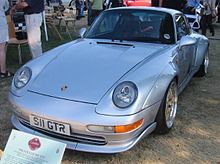
If you were to ask any Porsche enthusiast to name their favorite Porsche vehicle, they would likely choose the 993. Quite simply, it all came down to the aesthetics of the vehicle. It was elegance personified with integrated bumpers as well as many more physical changes. The 993s most notable change was the lower hanging front section which was lower than previous models. This was made possible by switching the previous round headlights to poly-ellipsoid. The 993 was not only elegant; it was reliable and agile which stemmed from its aluminum chassis. The 993 soon began to build a reputation around this reliability.
The changes did not end there. The Turbo version of the 993 was the first of its kind to sport a bi-turbo engine. This development had a number of implications. The most notable was that it allowed the 993 to have the lowest emission stock automotive powertrain in the world in 1995. The 993 continued to wow the world with continued innovations such as hollow spoke aluminum wheels (never used on an automobile before this point), and all-wheel drive. Next came the Porsche 911 GT2 which focused on those who wanted the raw power of a sports car. These sports car purists were known for their love of high speeds and the Porsche 911 GT2 delivered in spades.
1997
1997 introduced an entirely different beast. The 996 roared off of the assembly lines from 1997 to 2005. The 996 was reminiscent of the previous models from which it derived its heritage, but the vehicle itself was very much its own automobile. For starters, the engine, air cooled before this point, was the first to have a water cooled boxer design. Its four-valve cylinder allowed the 996 to have reduced emissions, reduced fuel consumption, and less noise. The 996 was a revolutionary vehicle. The outer aesthetics had a throwback design to the old school 911 line. On a side note, the design of the 996 was the culmination of sharing components with one of Porsche’s earlier builds,the popular Boxster model and later-on Cayman model.
For a time, the 996 was the cause of controversy due to its design choice of integrating the turn signals with the headlights. Later, this design was copied by other manufacturers. With increased performance came improved comfortability. The interior of the vehicle was unlike anything that came before it. With the launch of the 996, Porsche began an aggressive campaign with an entire fleet of new variations. One of the main highlights was the 911 GT3 (1999). The GT3 kept the tradition of the Carrera RS alive and well. Following suit was the 911 GT2 which was marketed as an extreme sports car. It came equipped with ceramic brakes as a standard addition of the package. The GT2 was released to the public in the fall of 2000.
2004
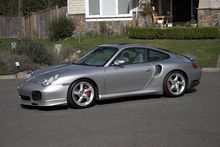
During the summer of 2004, Porsche released its latest generation to the world in the form of the 911 Carrera S model, referred to by some (internally) as the 997. The integrated headlight/blinker design seen in the 996 was done away with, replaced by the older model style that focused on separated blinkers and oval headlights. The return to the older aesthetical design wasn’t the only offering the 997 brought to the table. Simply put, the 997 was built as a high-performance vehicle, sporting a 3.6-liter boxer engine that could crank out 325 hp. With a reworked chassis and Active Suspension Management, the 911 Carrera S was a force to be reckoned with.
In 2006, the 911 Turbo was introduced onto the playing field. The Turbo was the first gas powered vehicle to include a turbocharger with a variable turbine geometry. 2008 brought with it an even more efficient upgrade, with a dual clutch transmission and direct fuel injection. These changes were revolutionary because Porsche had never made such changes to suit the individual preferences of drivers. Up to this point, the 911 family was comprised of Targa, Carrera, Cabriolet, Turbo, special models, rear or all-wheel drive, road versions of GT racing cars, and GTS. The entire line totaled at 24 model versions.
2011
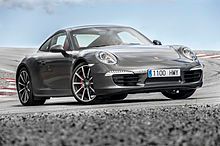
2011 has brought with it the most technologically advanced 911 in the entire series. Known as the 991 internally, this new addition to the family has raised the bar several times over. The 991 comes with a wider track, bigger wheels, new suspension, a longer wheelbase, and an optimized interior. All of these features together make the 991 the most comprehensive and comfortable 911 in the family. Some view the 991 as the culmination of superior Porsche manufacturing with its high levels of performance and low fuel consumption. The 991 has a smaller 3.4-liter displacement as well as a hybrid steel and aluminum assembly.
The 991 also sports the Porsche Dynamic Chassis (PDCC) and introduced the world’s first seven-gear manual transmission. With its medley of upgrades such as new contours, beautiful details, and detailed silhouette, Porsche has succeeded in revitalizing a vehicle that has undergone seven generations of iterations and changes. Car enthusiasts can all agree that the 991 is the greatest Porsche of all time.
Summary
Porsche has built a grand dynasty with the 911 series. It has undergone changes that have redefined the automobile industry almost every time a new vehicle hit the stage room floor. Elegant, classy, and more comfortable with each new generation, the 911 is easily Porsche’s grand jewel that only grows more and more grand with each new iteration. We can only wait with baited breath to see what Porsche has in store for us in the future.
Updated